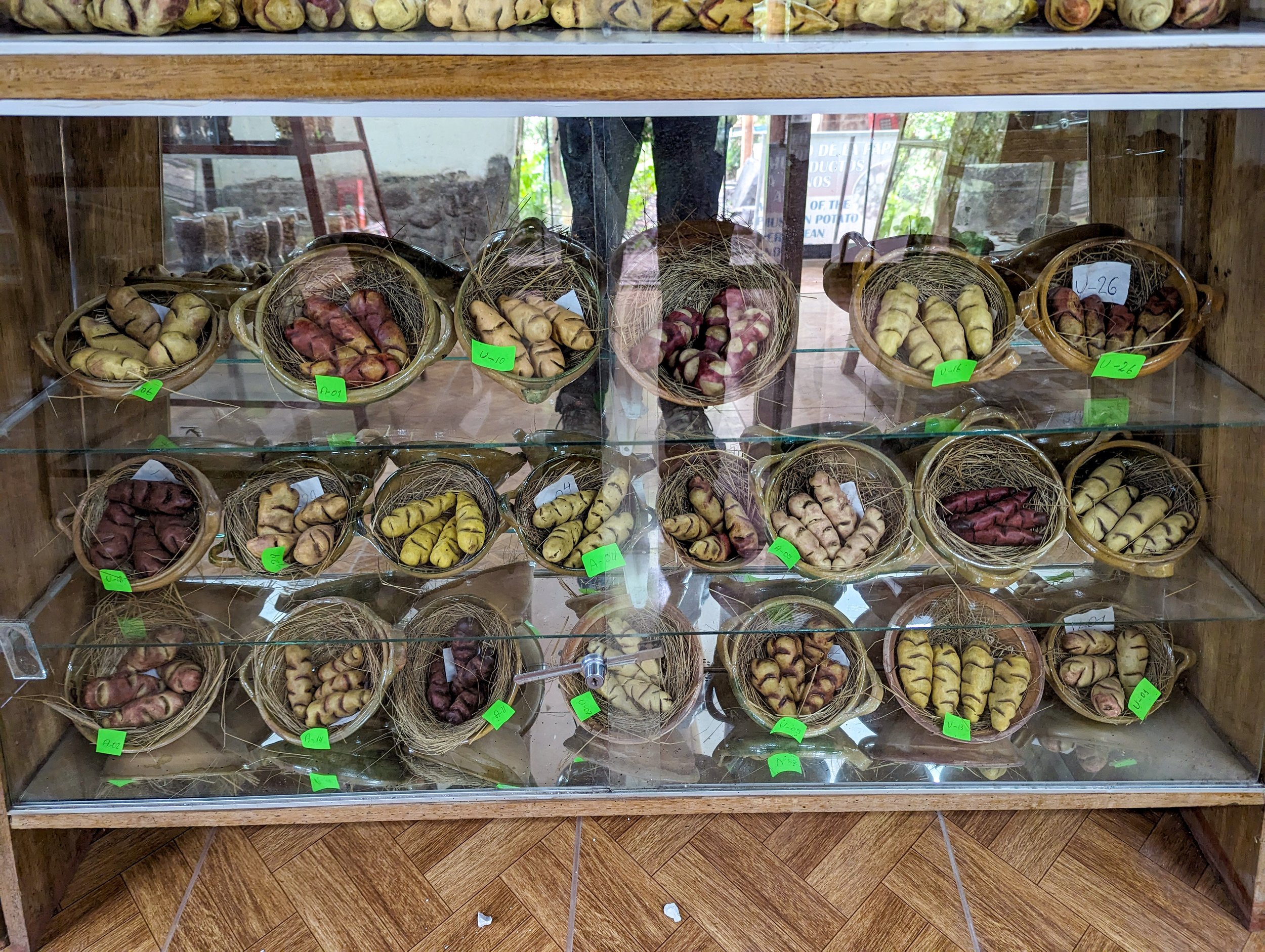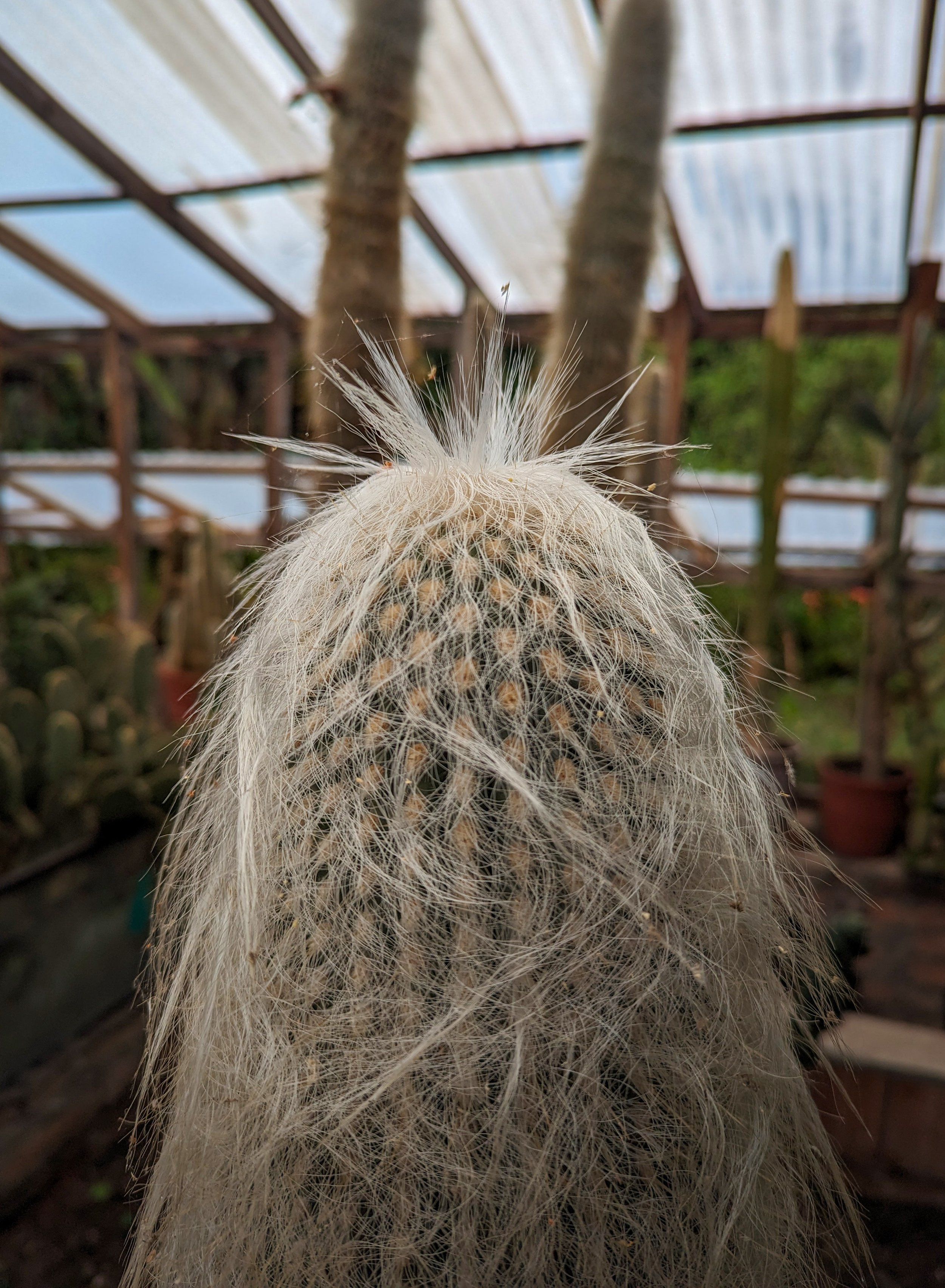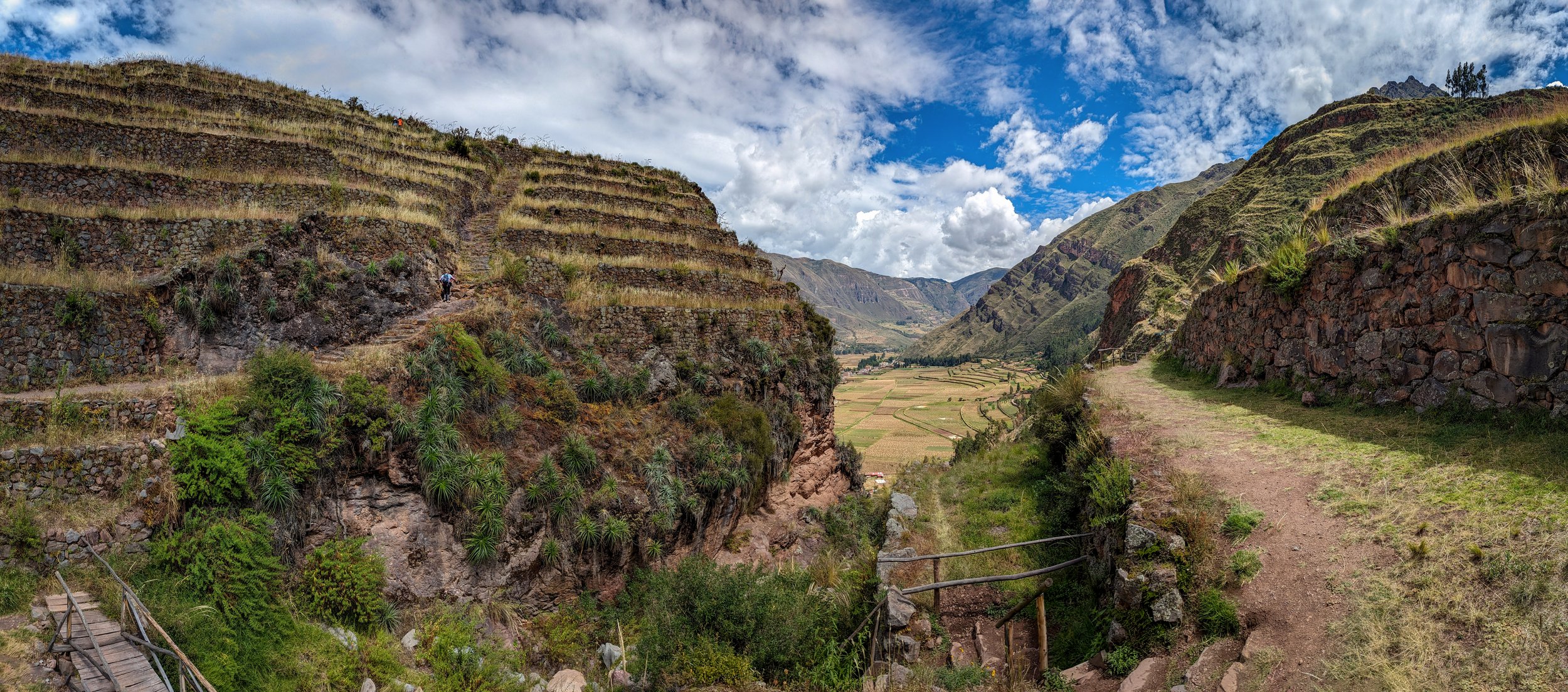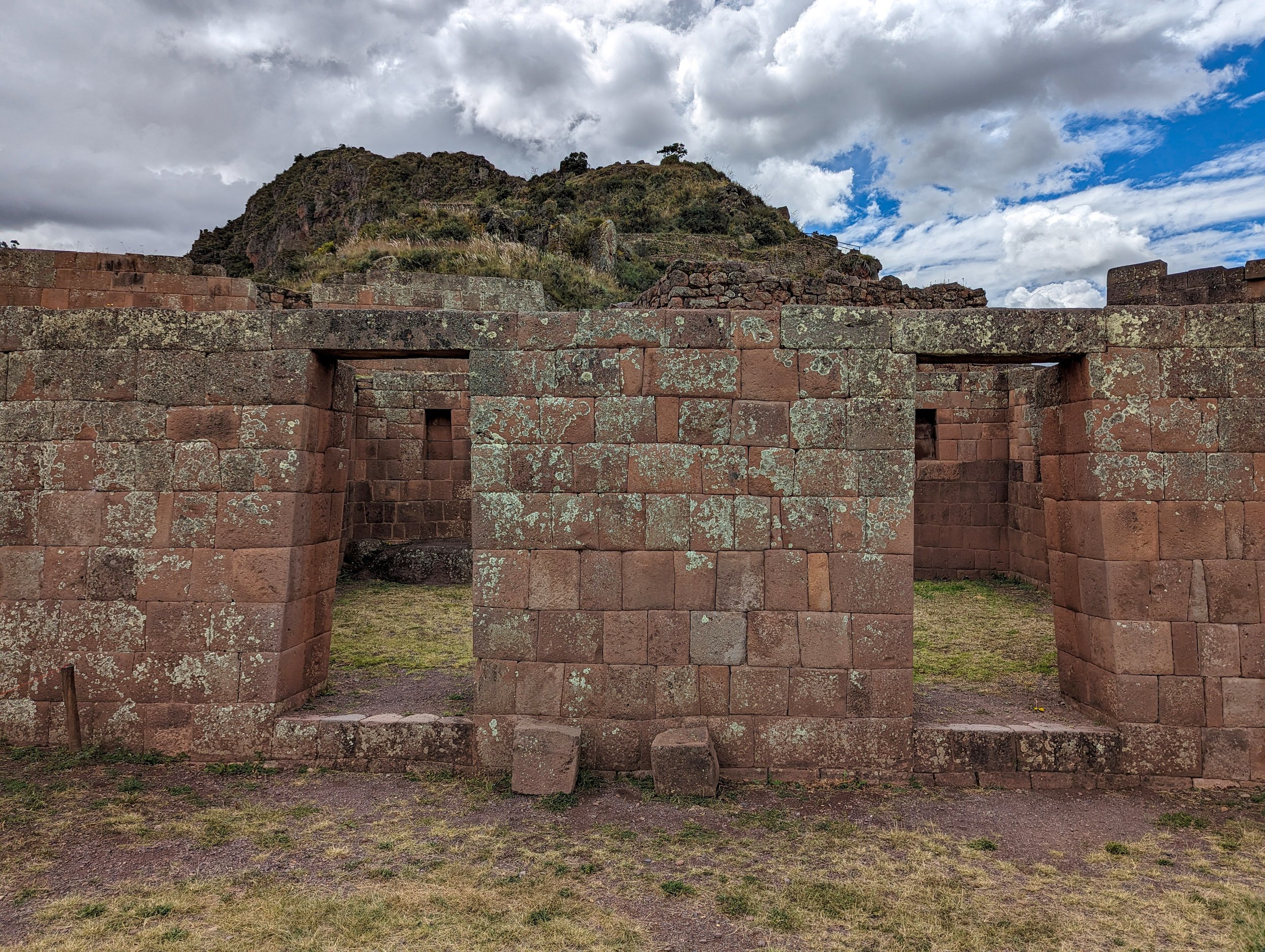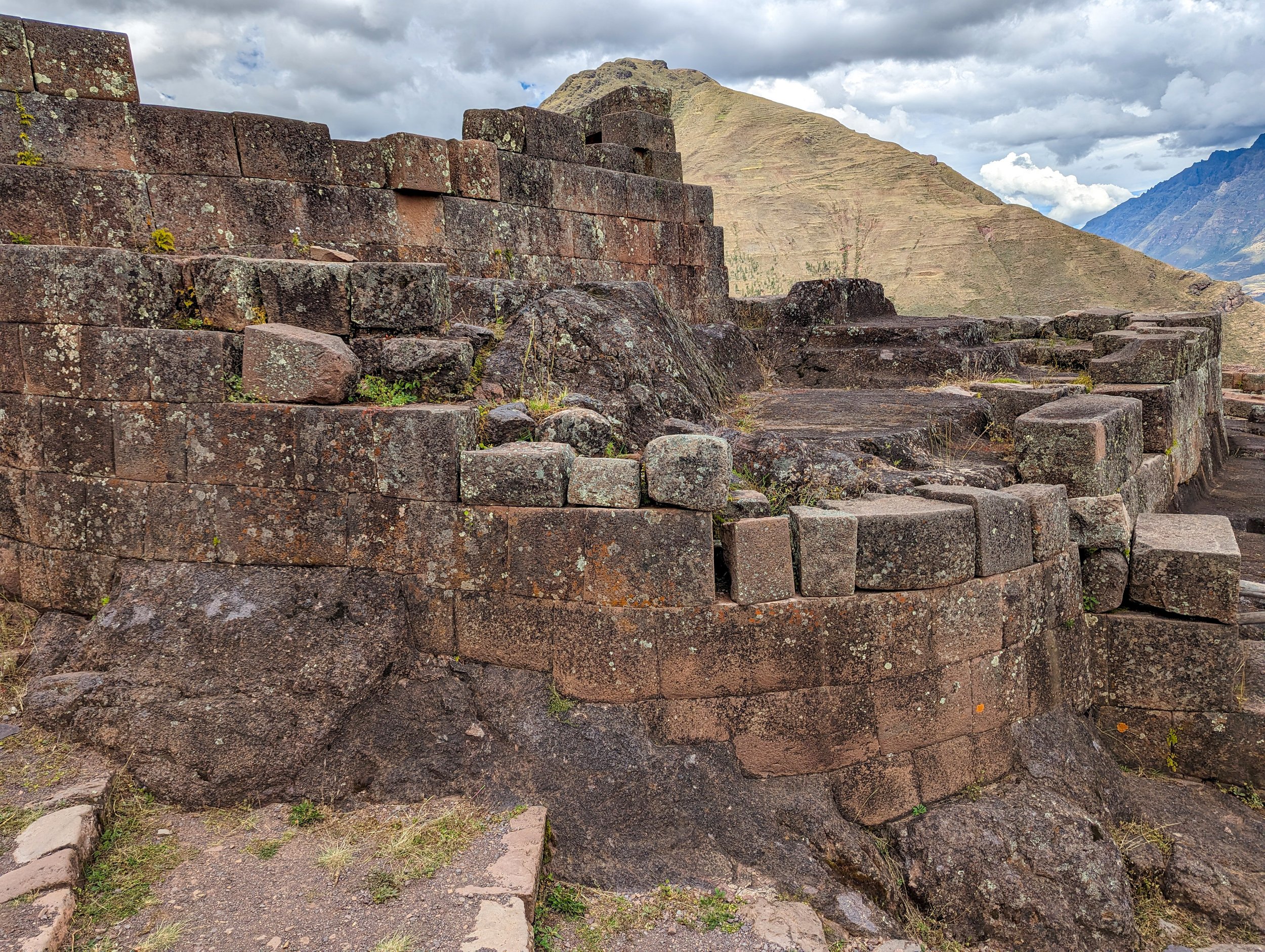Day 1,050
Pisac
Despite feeling Inca-ed out we decided to stop in Pisac, where we could visit more Inca remains. In pre-Inca times the local Quechua people had lived and farmed the lower slopes of the surrounding hills. As the threat of attack from other tribes eased they moved into the valley floor and the town of Pisac was formed. The Incas arrived to conquer the area around the mid-1400s. It is believed that the large complex on the mountain ridge above the town was constructed by Emperor Pachaucuti. The general consensus is that the site was a residence for his family, but also a citadel, observatory and religious site. There are so many buildings, terraces where they farmed along the slopes, paths leading through maze-like layouts of houses, narrow passageways to traverse, a circular building surrounding a rock where it is believed they worshipped the sun. Two gaps in the rocky hillside needed to be forged to gain access to the upper slopes. It’s still a massive and impressive site despite the Spanish, led by Francisco Pizarro, destroying much in the 1530s. Though the Viceroy Toledo did have the present town of Pisac built in the 1570s.
We cycled into the town along the main road and to be honest it looked rather run down and grim at first, but when we turned into the central town, the layout mainly unchanged since the 1570s, it was a different story. Beautiful narrow cobbled lanes, lined with houses and shops. The larger properties all built around a central courtyard. It was fantastic to see, virtually traffic free, a great place to live. Immediately we were aware of a slightly different vibe. The town is famous for its market. The Quechua people who live there and in the surrounding hills bring their organic produce and clothes etc. made from alpaca wool to the town to sell, attracting buyers in big numbers from nearby Cusco and visitors from all over the world. It was clear that artists from so many countries had been tempted to stay, there was definitely a hippy vibe to the place. The market has spilled out to the surrounding streets, and although many of the goods were the same we had seen throughout Peru, there was clearly a bigger range, some fantastic quality knitwear, jewellery and artwork for sale.
We found a super cheap hostel and booked in for a few nights. Day 1 we updated the blog and took advantage of all the awesome cafes and restaurants. Day 2 we pretty much repeated day 1, though we took time to plan the coming weeks, with research into where to visit for our trip into the Amazon and our route into Brazil. Day 3 dawned and we had planned to finally visit the Inca remains in the hills high above us. It rained all night and was still damp when we woke. Tom turned to me and said, it's a sign, let's not bother. I wasn't sure what I thought but as the rain started to fall again in earnest I decided to agree. Tom was also suffering from a bad toothache. Despite having it treated and filled a few months back, it had started to niggle, and then really hurt. We spent Day 3 eating, avoiding the rain, having a beer or two and talking about what to do. The first priority was finding a dentist, which means a return to Cusco. Decision made we realised that we couldn't come to Pisac and not visit the Inca site looming above us. We booked yet another night and hoped for sun. We also managed to find time between eating to visit the ‘Jardin Botanico’. The gardens were created back in 1917 by Felipe Marin Moreno, a Peruvian botanist and explorer. They are enclosed in an old colonial garden, surrounded on two sides by excellent cafes which have the wall onto the garden constructed of glass so we could, and did, enjoy our meals looking into the garden. He built up a collection of many rare plants as well as native species. It also houses a museum dedicated to the vast number of different types of potatoes native to Peru. There are some seriously weird looking potatoes out there! The garden was declared to be part of Peru's historical heritage, and inspired by this, Felipe Marin's son, Josè, took the decision to open the garden to the public. For 10 soles each (about £2.50) we had a private guided tour. Tom was in his element obviously but I must admit I was pretty fascinated at the range of plants and those potatoes. So much so I needed a coffee and cake to recoup, thankfully no problem finding somewhere to go!
Thus inspired, we realised we were ready for yet another Inca site.
So we booked another night, and as day 4 in Pisac dawned we were ready to hike up and up into the hills. The fact that we needed to get some exercise to work off all the cakes we had eaten definitely played a part but we had also re-found our excitement at seeing more Inca ruins.
The climb was seriously steep and long but as we neared the site it was clear this was somewhere special, so much so that for me, this is now my favourite Inca site. It doesn't have quite as awesome a setting as Machu Picchu, though what could? Nor as large stones as used at Saqsaywaman and Ollantaytambo, but it had a quality all of its own. Quieter than most places we had been, such a wide range of buildings, places to explore, steps to climb, on and on it went. I loved it. Maybe it's my Yorkshire heritage, but I do love value for money and here we were spoiled rotten!
We decided to taxi down rather than retrace our steps, it had taken us 3 hours to reach the top, dark clouds were looming and there were cakes to eat in the town below.
Tomorrow it’s back on the bikes and a ride up the opposite side of the valley back to Cusco. We spotted 3 of our Cusco cycling family walking through the ruins so we will hopefully reunite with them tomorrow, though definitely no more cakes!



